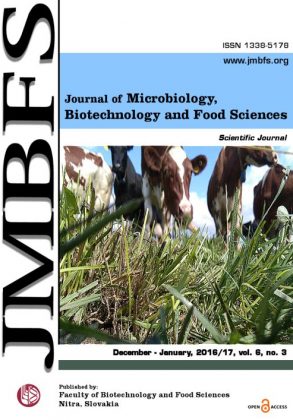ROLE OF NATURAL SUBSTANCES AND VITAMIN SUPPLEMENTATION IN TINNITUS PREVENTION AND TREATMENT
DOI:
https://doi.org/10.15414/jmbfs.2016/17.6.3.987-994Keywords:
Tinnitus, vitamins, antioxidants, bioflavonoids, natural substancesAbstract
The aim of this review is to refer a possibility of using natural substances for treating or reducing the symptoms of tinnitus. Tinnitus is a sensation of sound without an external source. It often manifests as a ringing in the ears, but it may also sound like a buzzing, hissing, whistling or even roaring in the head. Tinnitus is a symptom of an underlying condition. It can be linked to hearing loss, stress, ear damage, blood pressure, tumours and atherosclerosis. Exposure to loud noise is one major cause of tinnitus, since it wears down the delicate hair cells in inner ear that translate sounds into nerve impulses. Potential therapy of tinnitus is a pharmacological treatments. Fortunately, there are many effective natural alternatives to drugs that can bring considerable relief and help cope. The potential form of treatment is vitamins and natural flavonoids therapy. Low levels of melatonin and vitamin B12 in body have a significant correlation with the development of tinnitus. It was reported that melatonin is useful in the treatment of tinnitus, even in cases associated with sleep disturbance. There are relationship between vitamin B12 deficiency and dysfunction of the auditory pathway. Antioxidants are another substances which have a promising effect in the treatments of tinnitus. The constituents of G. biloba are potent scavengers of free radicals and has been prescribed their positive effect on treat of central nervous system disorders and cognitive deficits. Positive antioxidant effects have vitamin C, hesparidin and diosmin also.Downloads
Download data is not yet available.
Downloads
Published
2016-12-01
How to Cite
Slanina, T., Petrovičová, L., & Massányi, P. (2016). ROLE OF NATURAL SUBSTANCES AND VITAMIN SUPPLEMENTATION IN TINNITUS PREVENTION AND TREATMENT. Journal of Microbiology, Biotechnology and Food Sciences, 6(3), 987–994. https://doi.org/10.15414/jmbfs.2016/17.6.3.987-994
Issue
Section
Biotechnology
License
Copyright (c) 2016 Tomáš Slanina, Lenka PetroviÄová, Peter Massányi

This work is licensed under a Creative Commons Attribution 4.0 International License.
All papers published in the Journal of Microbiology, Biotechnology and Food Sciences are published under a CC-BY licence (CC-BY 4.0). Published materials can be shared (copy and redistribute the material in any medium or format) and adapted (remix, transform, and build upon the material for any purpose, even commercially) with specifying the author(s).





